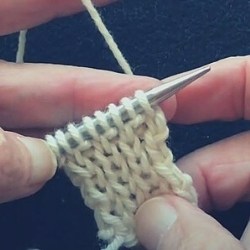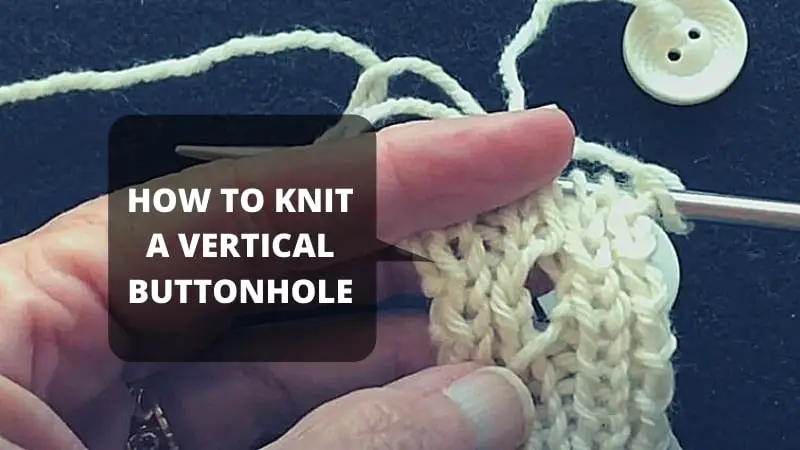How To Knit A Vertical Buttonhole?
When it comes to things related to buttonholes, we have covered a lot of topics. Starting from types of knitted button bands to hand sewn buttonholes vs buttonholing machine, we have covered them all. However, today we have a different topic in hand. It is a topic that many of us struggles with.
Yes, we are talking about learning how to knit a vertical buttonhole. This is a process that seems hard to perfect. However, with proper guidance, this too will become easier. So, without wasting any more of your precious time, let us get right into the process, shall we?

Step to Follow to Make A Vertical Buttonhole

Learning to use buttonhole scissors was pretty easy, right? Well, so was learning how to knit a buttonhole in garter stitch, correct? Well, we are going to follow the same trend here. We will keep things simple and easy to follow. And the steps are:
Step 1: Work on 1 by 1 Rib Pattern
Just like in the process of knitting a buttonhole in moss stitch, you need to first work on making a 1×1 rib pattern. Here, the position of the buttonhole needs to be considered first. Without considering the positioning, the buttons are not going to align, which is something we do not want.
Also, you need to end with a knit stitch. Then ready up the machine to work on a purl switch. For making the machine ready, follow the first steps we covered on sewing a buttonhole on an old machine. In the very end, the purl stitch should be right in the very center of the button band.
Now, the process of the first step is a lot similar to the step we followed on how to knit a buttonhole in rib. However, the same process is not applicable here because you might be working with a different material now. Also, that process does not generally make the holes look vertical.
Step 2: Purl the Front and the Back
The next step would be to increase the 1 stitch into the purl. Purl it through each of the sides and form an edge. Now, if you are working on a 2×2 rid or seed stitch, there will be no need to increase the size.
Step 3: Work on the Rib Pattern on the End of the Row
Like the process of knitting a buttonhole band, continue to follow the rib pattern on the very end of the row. Here, you need to work on the 1×1 rib to the very end of the rib to make the right pattern. Without going to the finishing, the pattern will not be proper here.
Step 4: Focus on Row 2
Now that you are done with the first row start focusing on the second row. Here, follow the increased stitching procedure. And once you are done with that, you will notice that the two of the stitches are forming a purl stitch on each of the sides.
Step 5: Work on Row 2 to Form a Rib Pattern with an Increased Stitch
As we have mentioned above, after the increased stitching, there will be two stitches with a purl on either side. You would need to knit these increased stitches. Here, you can use the best buttonhole sewing machine. However, other machines are going to work fine if you how to maneuver them.
On that note, it is totally possible to finish this step manually. But you are going to need steady hands, and to get the proper vertical shape, you might have to go through a lot of ribs. So, our recommendation for the first try would be to use a sewing machine.
Step 6: Begin the K1 Process
After working on row 2, attach a second yarn ball. Then start knitting the second knit stitch. You need to follow the same pattern of the 1×1 rib or stitch the pattern of your choice here. However, no matter what you follow, make sure to stitch to the very end of the row.
Step 7: Work on Row 3
Now that you are done with the 1×1 and two rows. Repeat the same process for row 3. Follow the same process for as many rows as needed. And the number of rows will primarily depend on the size of the buttonhole.
Step 8: Close the Buttonhole
The final step would be to close the buttonhole. For that, knit two stitches on the very top of the hole. And purl those two stitches together.
Final Words
Whether you are a first-timer or an avid tailor, learning how to knit a vertical buttonhole is important. And we hope that we were capable of making the process easier.
REFERENCES:

